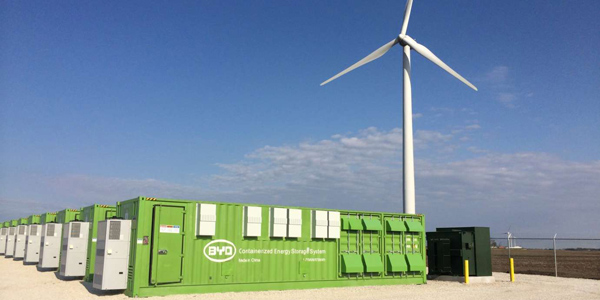By Amanda Durish Cook
MISO’s contentious first storage as transmission assets (SATA) proposal will become the subject of a future technical conference to allow FERC to weigh the merits of the plan, the commission ruled Tuesday.
FERC formally accepted MISO’s bid to include storage options in its annual transmission planning while also suspending the new Tariff provisions until Aug. 11 after determining they might be “unjust, unreasonable, unduly discriminatory or preferential.” Details of the upcoming technical conference will be included in a later notice (ER20-588).
The commission said the conference will most likely tackle MISO’s plans for evaluating and selecting storage as a transmission-only asset (SATOA), the existing formula rate providing a cost recovery process for SATOA projects and the operating guides applying to the projects. FERC will also discuss SATOA’s “market activities and any potential wholesale market impacts of those activities” and how the projects could potentially impact the RTO’s generator interconnection queue.
MISO’s plan — which stipulates that storage as transmission be limited for now to transmission-only functions and thus operated solely by transmission owners — drew several protests from stakeholders criticizing the RTO’s filing as giving its transmission owners an unfair advantage. Multiple entities said MISO’s ruleset is primed to allow incumbent transmission owners to effectively have a monopoly on storage assets functioning as transmission, harming competition. Several urged FERC to reject the filing. (See MISO SATOA Proposal Faces Opposition.)
The commission said it will collect comments after the technical conference and will consider them in further action on the filing.
MISO has said its ruleset would avoid introducing complexities around cost recovery, particularly related to how non-transmission owners would be compensated for providing transmission services.
RTO staff have also repeated assurances that they will soon begin designing new rules that will allow SATA to function as transmission while simultaneously participating in MISO’s energy markets.
MISO officials have also said storage developers and owners who are not classified as transmission owners could still propose projects under the RTO’s existing rules for selecting non-transmission alternatives (NTAs) in the place of transmission projects. MISO last year placed several mentions of electric storage resources into BPM 20, the business practice manual managing NTAs.
But MISO storage owners and developers said the treatment remains unequal since NTAs must first clear the RTO’s approximately three-year generation interconnection queue. The queue is not a requirement for transmission owners proposing SATOA, who instead submit their projects for study through the annual MTEP process.
MISO’s 2019 Transmission Expansion Plan (MTEP 19) includes American Transmission Co.’s Waupaca area energy storage project, which is meant to ease transmission reliability issues in central Wisconsin. The first-ever SATOA project in the RTO’s footprint was withheld from final MTEP 19 approval as MISO waited on the SATOA rules for its cost recovery method. The RTO had planned for its Board of Directors to hold a special March vote on approval of the project once it had FERC’s go-ahead on its rules and cost recovery method. (See MTEP 19 Could Yield First MISO SATA Project.)




